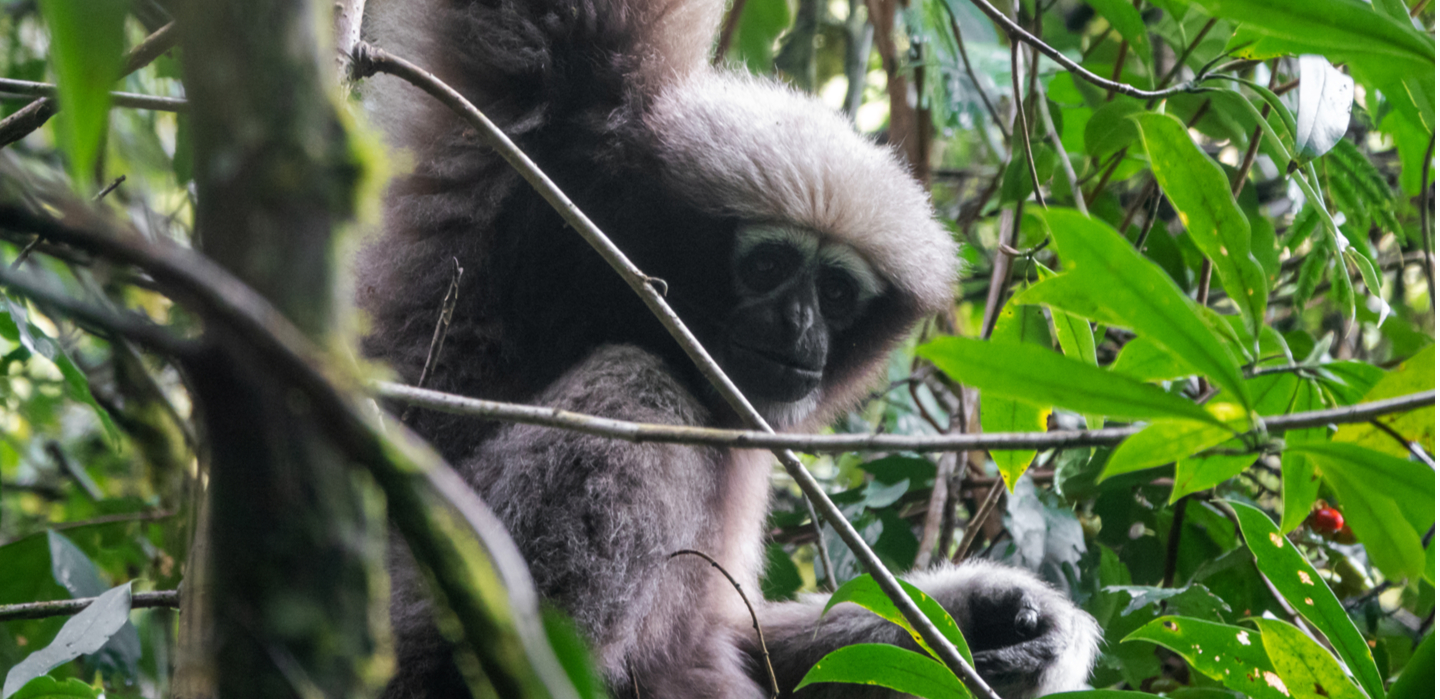在中國雲南的山林深處,有一種罕見的哺乳動物。在古老的傳說中,這些難以捉摸的動物發出的叫聲可以預報天氣,甚至可以預測死亡。雖然牠們的身影早就出現在傳統文化中,但幾年前牠們才被當作一個新物種被發現。
在被本地和國際科學家團隊發現為新物種後,天行長臂猿(學名:高黎貢白眉長臂猿)立即引起了全球的關注。事實上,牠們之所以獲得這個名字,部分原因是發現牠們的科學家是星球大戰的粉絲!但是,伴隨著它們被發現,也帶來了一個不好的消息。
`
2017年,中國的天行長臂猿不足300隻。發現牠們所帶來的興奮,立即被如何保護牠們的未來這緊迫問題所消滅。天行長臂猿屬於猿類大家族,牠們沒有尾巴,很容易與猴子區分開來。事實上是遺傳學基因上和人類最接近的祖先。
但是在世界各地,長臂猿物種正日益受到威脅,甚至面臨滅絕。在中國長臂猿棲息地曾經遍布全國大部分地區,以至於中國古代詩人將它們寫進浪漫的詩歌裡。
但是森林被砍伐已經破壞了牠們大部分原有的活動範圍。如今中國的天行長臂猿只在雲南西南部,靠近中國與緬甸邊界的一個小角落被發現。值得慶幸的是,天行長臂猿是在中國被列為了受保護物種,許多都生活在國家級自然保護區內,這些保護區在不久的將來可能會升級為國家公園。
對天行長臂猿有了進一步的瞭解才能進行保護他們的工作。與上世紀 70 年代和 80 年代對大熊貓的早期保護工作類似,科學家們必須先深入瞭解長臂猿的習性和需求,然後才能制訂保護計劃。
曾與科學家和護林員在國家級自然保護區開展研究和保護工作。長臂猿生活的森林和山脈是我所到過的最美麗的地方。聆聽長臂猿的晨歌是經歷過的最神奇的自然現象之一。
目前,雖然不需要花費太多精力來保護生活在自然保護區內的長臂猿,但當地基層團體正在努力提高保護區外的社區和村莊對長臂猿的保護意識。對年輕人進行有關長臂猿生態價值的教育,以及聽取和推廣當地社區的傳統生態知識,是在保護區外保護長臂猿棲息地的一些主要方式。這可以讓當地社區被承認並被納入保護的範圍,是全球大趨勢中的流行作法。
中國的許多地區傳統上都禁止傷害或偷獵長臂猿,但隨著現代化的發展,這種傳統逐漸被丟失。將新的科學研究與自古尊重自然的意識相結合,我們可以更好地保護自然和周邊的人類生存環境。有了這條新的發展道路,如今的科學家們對天行長臂猿的未來持謹慎又樂觀的態度。
Deep in the mountainous forests of Yunnan, China there is a rare mammal that few have ever seen.Ancient legends say these elusive animals' calls can forecast the weather and even predict death.
While steeped in traditional culture, they were only discovered as a new species just a few years ago, and shortly after, I became one of the first foreign photographers to document them in their natural habitat.
Hi, I’m Kyle Obermann, Nature Contributor for the China Current,showing China’s wild side.
After they were discovered as a new species by a team of local and international scientists, the ‘Skywalker’ gibbon immediately caught global attention.
In fact, they earned this name partly because the scientists who discovered them were Star Wars fans! But, there was a dark side to the news.
In 2017, there were less than 300 Skywalkers in China. The excitement of their discovery was immediately tempered by the pressing question of how to safeguard their future.
Belonging to the ape family, gibbons like the Skywalkers are most easily differentiated from monkeys by their lack of tail. In fact, they are some of our closest genetic ancestors.
But, around the world, gibbon species are increasingly threatened and even facing extinction.
In China, gibbon habitats once extended across much of the country to the extent that they were romanticized by poets across ancient China.
But, deforestation has destroyed much of their traditional range. Skywalkers today in China are only found in a small corner of southwest Yunnan, near China’s border with Myanmar.
Thankfully, Skwalkers are a protected species in China, and many live in a national nature reserve which in the near future may be upgraded to a national park. Much of the ongoing work being done to protect the species is rooted in first understanding it more. Similar to early conservation efforts of the giant panda in the ’70s and ’80s, scientists must first intimately understand the gibbon’s habits and needs before they can decide upon a protection plan.
I’ve accompanied the scientists and forest rangers in the national nature reserve who are carrying out the research and protection efforts.
The forest and mountains where the gibbons live are some of the most beautiful I’ve ever visited. Listening to the gibbons’ morning songs is one of the most magical natural phenomena I’ve ever experienced.
Currently, while less efforts are needed to protect the gibbons living inside the nature reserve, local grassroots groups are working to raise awareness for gibbon protection in communities and villages next to Skywalker populations outside of the reserve.
Educating young people about the ecological value of the gibbons, as well as listening to and promoting the traditional ecological knowledge of indigenous communities in the area, are some of the prime ways the habitat of gibbons can be protected outside reserves.
This is part of a broader trend across the globe to recognize and include local communities in conservation.
In many areas across China, taboos traditionally warned against hurting or poaching gibbons. With modernization, such cultural knowledge is often lost, but by combining new scientific research with ancient respect for nature, we can better protect nature and the people living close by. With this new path forward, scientists today are now cautiously optimistic about the Skywalker's future.

